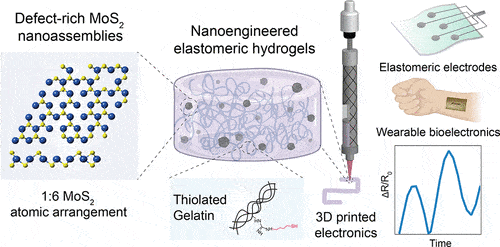Researchers develop biomaterial ink that can be tattooed on human skin for medical tracking applications

A team of Researchers at Texas A&M University introduced biomaterial ink that imitates highly conductive characteristics similar to human skin that are essential for the ink to be used in 3D printing. This new biomaterial ink supports a new class of 2D nanomaterials known as molybdenum disulfide (MoS2). The combination of thin-layered MoS2 structure with modified gelatin results in the flexible hydrogel. The ink has shear-thinning properties that enable it to decrease its viscosity when force is applied while remaining in a solid state otherwise. This property is similar to ketchup or toothpaste.
“The impact of this work is far-reaching in 3D printing,” said Dr. Akhilesh Gaharwar, associate professor in the Department of Biomedical Engineering and Presidential Impact Fellow. “This newly designed hydrogel ink is highly biocompatible and electrically conductive, paving the way for the next generation of wearable and implantable bioelectronics.”
The team used electrically conductive nanomaterials within modified gelatin that makes the hydrogel ink conducive to 3D printing. Researchers at Gaharwar Laboratory designed a cost-effective, open-source, multi-head 3D bioprinter that supports open-source tools and freeware and is fully functional and customizable. This enables any researcher to design 3D bioprinters as per their research needs.
“These 3D-printed devices are extremely elastomeric and can be compressed, bent, or twisted without breaking,” said Kaivalya Deo, a graduate student in the biomedical engineering department and lead author of the paper. “In addition, these devices are electronically active, enabling them to monitor dynamic human motion and paving the way for continuous motion monitoring.”
The hydrogel ink can constitute complex 3D circuits and can also assist to print electrically active and stretchable electronic devices. These devices have great strain-sensing capabilities which make them efficient in using customizable monitoring systems. This enables new opportunities to integrate.
Click here for the published Research Paper








